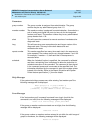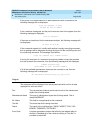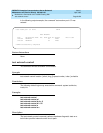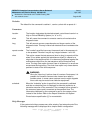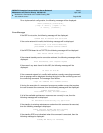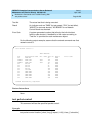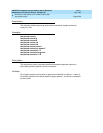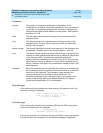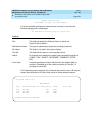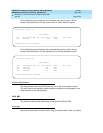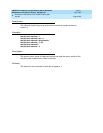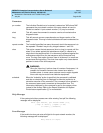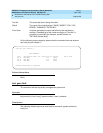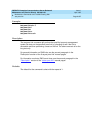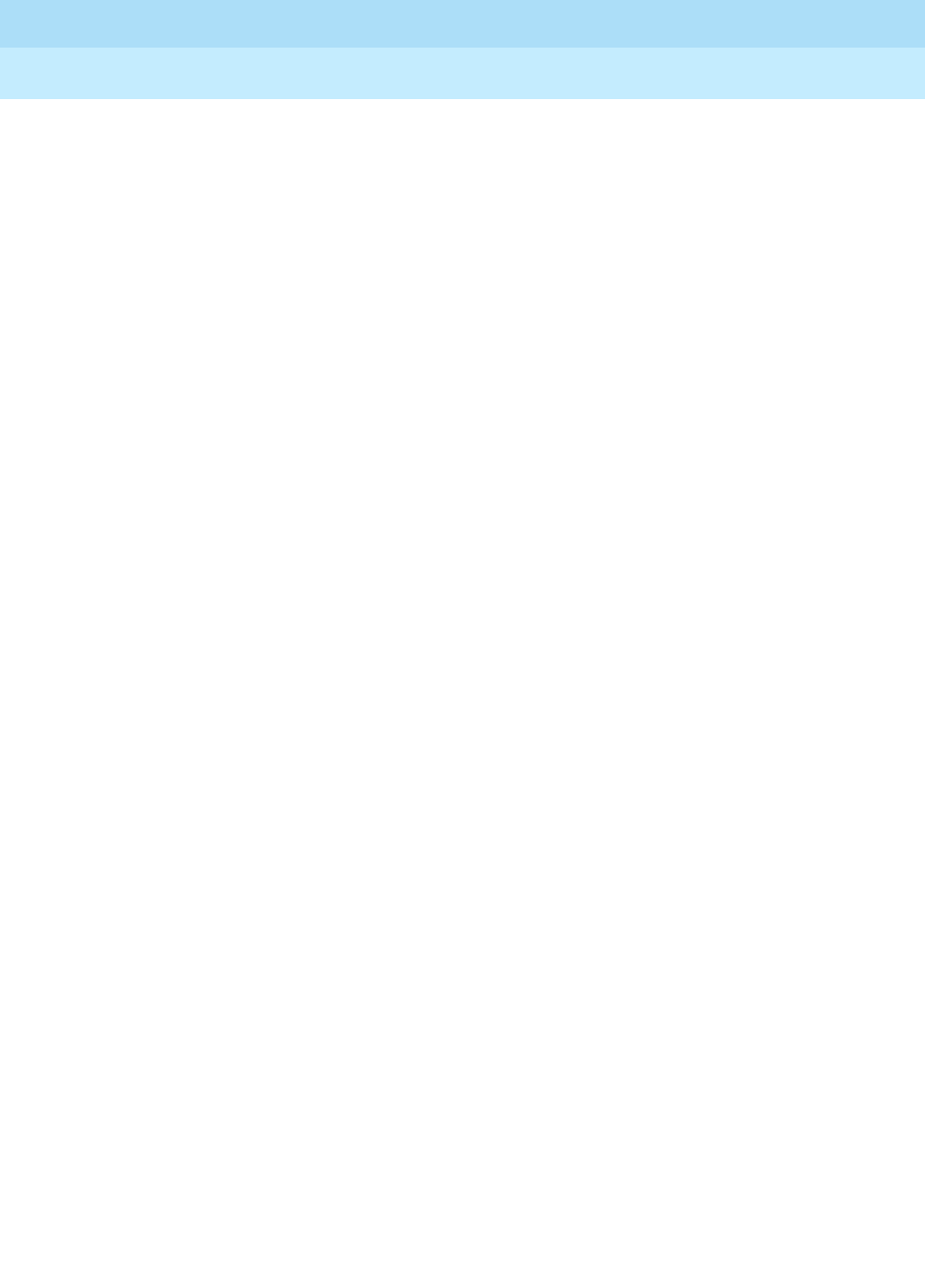
DEFINITY Enterprise Communications Server Release 5
Maintenance and Test for R5vs/si
555-230-123
Issue 1
April 1997
Maintenance Commands and Trouble-Clearing Aids
Page 8-630test packet-control
8
Parameters
Help Messages
If the system technician presses HELP after entering "test packet-control", the
following message is displayed:
Enter [cabinet(1)]; carrier (A-B),
[’long’ or ’short’], [’repeat’ (1-100)
or ’clear’], [’schedule’]
Error Messages
If this command is executed on the standby SPE and this SPE is busy at the
moment, the following will be displayed:
Standby SPE busy;
See status system for more details
If during the execution of a command a resource problem occurs that requires
the user to restart the command, then the following message is displayed:
location The location only applies to duplicated configurations. If the
configuration is a simplex, the location parameter is not used and thus
is not valid. For duplicated configurations, a "location" represents the
carrier that the packet-control resides on in the system. Valid locations
are either 1A or 1B.
short This will cause the command to execute a series of nondestructive
diagnostic tests.
long This will execute a more comprehensive and longer version of the
diagnostic tests. The long version does not include any destructive
tests for this command.
repeat number The "number" specifies how many times each test in the sequence is to
be repeated. "Number" may be any integer between 1 and 100.
clear This option causes the test sequence (short or long) to repeat until the
alarm (if on exists against the packet-control) is cleared or a single test
in the sequence fails. If no alarms are registered against the
packet-control the test sequence will be run only once. The long clear
option forces a clear of all alarms if no errors are encountered during
testing. The short clear option only clears alarms related to tests in the
short sequence.
schedule When the "schedule" option is specified, the command is validated and
then a scheduling form is displayed to allow the technician to schedule
execution of the command. The command is then placed in the
command queue and is executed at the specified time. The
information displayed by the command is sent to the system printer
instead of the screen. Refer to the Report Scheduler and System
Printer feature specification [1] for more details.



